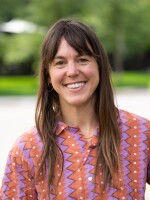Federal agencies have established different guidelines for the COVID-19 vaccine, which has led to confusion among the public and health care providers in the Roaring Fork Valley ahead of the anticipated winter COVID surge.
“There is a lot of confusion about what's approved, who can get what, and how people can go about getting it,” said Carly Senst, the epidemiologist for Pitkin County.
In the Roaring Fork Valley, COVID-19 vaccines are now available from local health care providers and by appointment at the CVS in Glenwood Springs and City Market Pharmacies. But until this week, many people in the Roaring Fork Valley trying to get a vaccine were turned away due to a confusing series of changes in vaccine policies at the federal level.
The confusion began earlier this year when the Food and Drug Administration limited the new round of COVID-19 vaccines to people 65 or older or those at risk for serious complications from the virus.
In a post on X, Health and Human Services Secretary Robert F. Kennedy Jr. said, "These vaccines are available for all patients who choose them after consulting with their doctors.”
But in practice, the decision made it harder for many people to get the shot.
Healthy children and younger adults who wanted the vaccine would need an individual prescription from their doctor; however, the vast majority of people in the U.S. have gotten their COVID vaccines from pharmacies, not the doctor's office. Meanwhile, some doctors were uncomfortable prescribing the vaccine for people who were ineligible under federal guidelines.
“We were receiving a lot of questions from physicians, asking what we would recommend, asking what they could do, what our messaging is going to be,” Senst said.
According to Senst, many healthcare providers in the valley had stocked the vaccine and were booking appointments when the FDA decision came out.
She added that health care is prohibitively expensive for many people in the Roaring Fork Valley.
“To be told they could not get it, they still have to pay for that appointment, and then they have to come back later and do it all over again,” Senst said. “That is a barrier.”
The Advisory Committee on Immunization Practices, which crafts recommendations on vaccine policy, typically updates its vaccine guidance earlier in the year, but by mid-September, they had yet to do so.
On Friday, Sept. 19, the committee ultimately voted to leave decisions about COVID-19 vaccines up to individuals after they consult with a medical provider.
The vote represents a more limited recommendation than in years past, but it did broaden who was eligible to receive the vaccine compared to the FDA’s requirements.
According to Senst, all the flip-flopping at the federal level over COVID vaccine policies will have a long-range impact on public health.
In an effort to bring some clarity at the state level, Gov. Polis issued a public health order on Sept. 3 allowing pharmacists to provide COVID vaccines without individual prescriptions. The order also ensures that all Colorado-regulated insurance covers the vaccines.
Despite the confusion and changes at the federal level, Senst noted that data around COVID-19 vaccines remains the same: they are safe and effective at preventing severe illness from the virus.



